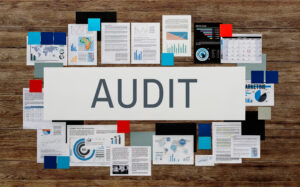Introduction:
ISO 14001, the internationally recognized standard for Environmental Management Systems (EMS), plays a critical role in helping organizations reduce their environmental impact. A key component of maintaining compliance with ISO 14001 is the regular internal audit process, which ensures the effective functioning of an organization’s EMS. ISO 14001 internal auditor training is essential for equipping individuals with the knowledge and skills needed to perform these audits. However, a recurring challenge in many organizations is the gap between theory and practice. This article explores how ISO 14001 internal auditor training can effectively bridge that gap, ensuring that auditors not only understand the theoretical concepts but also apply them in real-world scenarios.
The Importance of ISO 14001 Internal Auditor Training
ISO 14001 internal auditor training provides individuals with a comprehensive understanding of environmental management principles, the structure of an EMS, and the specific requirements of ISO 14001. Internal auditors are tasked with evaluating whether an organization’s EMS complies with the standard and identifying areas for improvement.
Effective training enables auditors to assess environmental risks, review operational controls, and provide actionable feedback. However, while the training lays a strong theoretical foundation, applying these concepts in day-to-day operations often poses challenges. This is where the gap between theory and practice emerges.
Challenges in Translating Theory to Practice
a. Understanding Complex Regulations
ISO 14001 internal auditors are required to be familiar with various environmental regulations, standards, and compliance requirements. While training covers the theoretical aspects of these regulations, applying them to specific industries, operations, or local contexts can be difficult. Auditors may struggle to interpret how certain legal or regulatory requirements apply in practice, particularly in complex or highly regulated industries like manufacturing or energy.
b. Industry-Specific Knowledge
Theoretical training tends to focus on general principles that apply to all sectors, but each industry faces unique environmental challenges. For example, auditing an EMS in the agriculture sector might differ from that in the automotive industry. Internal auditors may lack the specialized knowledge required to address industry-specific environmental concerns, leading to ineffective audits.
c. Overcoming Organizational Resistance
A common challenge that internal auditors face is organizational resistance. Employees may see audits as an intrusive process or feel that auditors are focused solely on identifying flaws rather than improving processes. While training provides strategies for conducting audits, it may not fully prepare auditors for the human dynamics they encounter, such as resistance from staff or a lack of engagement from management.
Bridging the Gap: Integrating Practical Experience into Training
Bridging the gap between theory and practice requires a more integrated approach to ISO 14001 internal auditor training. Here are key strategies that can help auditors move from theoretical understanding to practical application:
a. Hands-On Case Studies
Training programs that incorporate real-world case studies allow auditors to practice applying ISO 14001 requirements in simulated scenarios. By reviewing actual EMS examples, auditors can learn to assess different environmental risks, identify non-conformities, and recommend improvements. These case studies should span various industries to help auditors develop a broader understanding of how ISO 14001 is applied across sectors.
b. Field Audits and Practical Simulations
One of the most effective ways to bridge the gap between theory and practice is through field audits and practical simulations. In addition to classroom training, internal auditors should participate in mock audits where they can practice conducting assessments, interviewing staff, and reviewing documents. These hands-on experiences can highlight the nuances of auditing in a real-world setting, from identifying areas of risk to managing unexpected challenges during audits.
Fieldwork also exposes auditors to industry-specific practices and environmental issues, improving their ability to tailor audits to specific organizational needs.
c. Mentorship and Peer Learning
Pairing less experienced auditors with senior mentors can facilitate a smoother transition from theory to practice. Mentors can provide valuable insights from their own auditing experience, helping new auditors navigate complex audits and overcome organizational challenges. Peer learning sessions where auditors share their experiences and best practices can also help bridge this gap by fostering collaborative learning.
d. Ongoing Professional Development
Auditing is not a one-time task; it requires ongoing professional development to stay up-to-date with evolving environmental standards, regulations, and industry trends. Regular refresher courses and advanced training programs can help auditors refine their skills and knowledge. This continued learning also supports auditors in adapting to changes within their industries, such as new environmental technologies or regulatory updates.
Enhancing Practical Outcomes: Technology in Auditing
Technology can play a key role in making ISO 14001 internal auditor training more practical and effective. For example, environmental management software can simplify the audit process by automating data collection, streamlining document review, and helping auditors track non-conformities. Training programs that integrate technology tools can improve an auditor’s ability to apply ISO 14001 requirements efficiently and accurately.
a. Data-Driven Auditing
Data analytics tools allow auditors to analyze large datasets, making it easier to identify patterns, trends, and areas of risk. By learning how to leverage data during their audits, auditors can make more informed decisions and provide actionable recommendations. Training that incorporates data-driven approaches gives auditors the skills to gather, assess, and interpret environmental performance data.
b. Virtual Auditing Tools
The rise of virtual auditing tools has made it easier to conduct remote audits, especially for organizations with global operations. ISO 14001 internal auditor training should include a focus on how to use virtual audit platforms and remote communication tools. This training prepares auditors for future trends in environmental auditing, enabling them to adapt to new challenges and technologies.
Conclusion: A Balanced Approach to Training
Bridging the gap between theory and practice in ISO 14001 internal auditor training is essential for ensuring the effectiveness of environmental audits. By integrating practical experiences, hands-on simulations, and industry-specific knowledge into training programs, auditors are better equipped to apply their theoretical knowledge in real-world contexts. Mentorship, ongoing professional development, and the use of technology further enhance auditors' capabilities, ensuring that their work supports both environmental compliance and continuous improvement within organizations.
As the world places increasing emphasis on sustainability, the role of internal auditors will become even more critical in ensuring that organizations align with global environmental goals. To succeed, training programs must continually evolve to balance theory with practical application.



